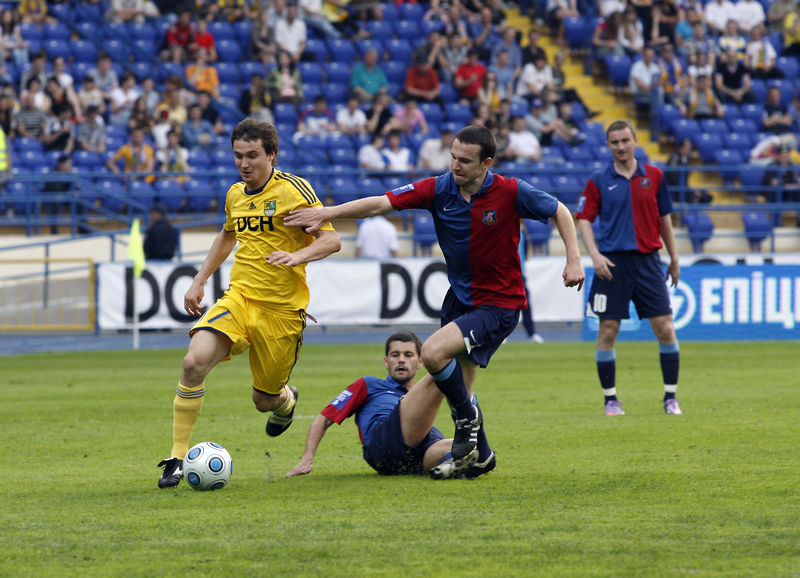Last updated on November 8th, 2023 at 10:35 am
The game of soccer is a contact sport for a few reasons. First, soccer players run at high speed after the ball to score against the opposing team’s goalkeeper. As players run down the field, accidental contact or even shoulder tackling can occur as players go after the ball. With the players’ speed running down the field, serious injuries can occur even with a minor bump between players due to how fast they are going.
Second, concussions are part of the game for a few reasons. The first is when players go for a header when the ball is up in the air. Hitting the ball with your head can cause injuries, especially if the game occurs on a cold night and the ball feels heavier due to the weather. Second, head injuries can happen when multiple players jump up in the air after the ball. Even semi-contact between soccer players going up after the ball near the goal post can result in injuries if heads collide.
Third, legal tackles and keeping possession of the ball through dribbling result in contact on the pitch. When you have the soccer ball, the opposing team can slide into you to push the ball away, which can trip you. There is no penalty as long as the tackle is seen as part of the game and not something malicious. However, excessive tackling can result in penalties, which is how soccer games try and differentiate the types of contact allowed during a game.
What is a Contact Sport?
According to Dictionary.com, a contact sport allows physical contact between players as part of the aspect of the game. A soccer game fits that definition due to players bumping into each other, sliding into each other, and colliding as they go after the ball. The better way to categorize soccer (association football) is to say it has limited contact.
How Does Soccer Regulate Full-Contact During Games?
Soccer players only have limited protective equipment during a game, usually only shin guards. While some soccer goalies use protective headgear to reduce head injuries, most players don’t wear additional gear. To protect the players on the field, soccer referees follow the FIFA Laws of the Game to regulate contact during a game.
Yellow Cards
Yellow cards occur in soccer games as a minor violation against the Laws of the Game rules. A yellow card can occur regarding contact if a soccer player slides into a player from behind, who has the ball, and trips them. To discourage these blindside slides, referees will issue a yellow card to help reduce injuries like sprains on the field.
During a yellow card violation, the offensive team will receive a free kick (indirect or direct) to restart the game’s action. In addition to resuming the game’s activity, that player who got the yellow card has one more warning for the rest of the game. They are removed from the match if they get a second yellow card during a game.
Red Cards
Getting a red card means a major violation during a soccer game. While association football games allow contact during the game for players playing the ball, they don’t allow malicious contact aimed to hurt others.
For example, a player kicking another in the face, headbutting them to the ground, or grabbing onto them results in an immediate red card. Getting the red card removes that player for the remaining game and can result in a fine penalty. In addition to that, your team plays the remainder of the match with one less player.
How Many Injuries Occur in the Premier League on Average?
According to the Royal College of Podiatry, 2.3 injuries occur per game in the Premier League during the 2018-2019 season. Since each game is 90 minutes of game action and stoppage time, it shows injuries occur frequently.
Conclusion: Is Soccer a Contact Sport?
In summary, soccer (association football) is indeed a limited-contact sport. The game’s purpose is for players to go after the soccer ball to shoot and score against the opponent’s goalkeeper, but there are instances where contact does occur. Most contact is part of the game, like shoulder-to-shoulder bumps or legal tackles, but there are times when the contact becomes more fierce between players.
Referees can issue a yellow or red card to help protect players against excessive force during games. Giving cards during the game helps discourage unsafe behavior between players, allowing the game to continue and limit future injuries. If a player deliberately hurts another player on the pitch, then that player is removed from the match.
Similar Posts:
How Many Players are on a Soccer Team?
Why Do Soccer Games End in a Tie?
Greg Kristan, owner of The Stadium Reviews, LLC and TM Blast, LLC, brings his extensive experience visiting over half of the MLB ballparks, along with numerous MLS, NHL, NBA, and NFL venues, to provide in-depth coverage on the bag policy, food options, and parking. He has also been interviewed about his experiences on several sports podcasts.







